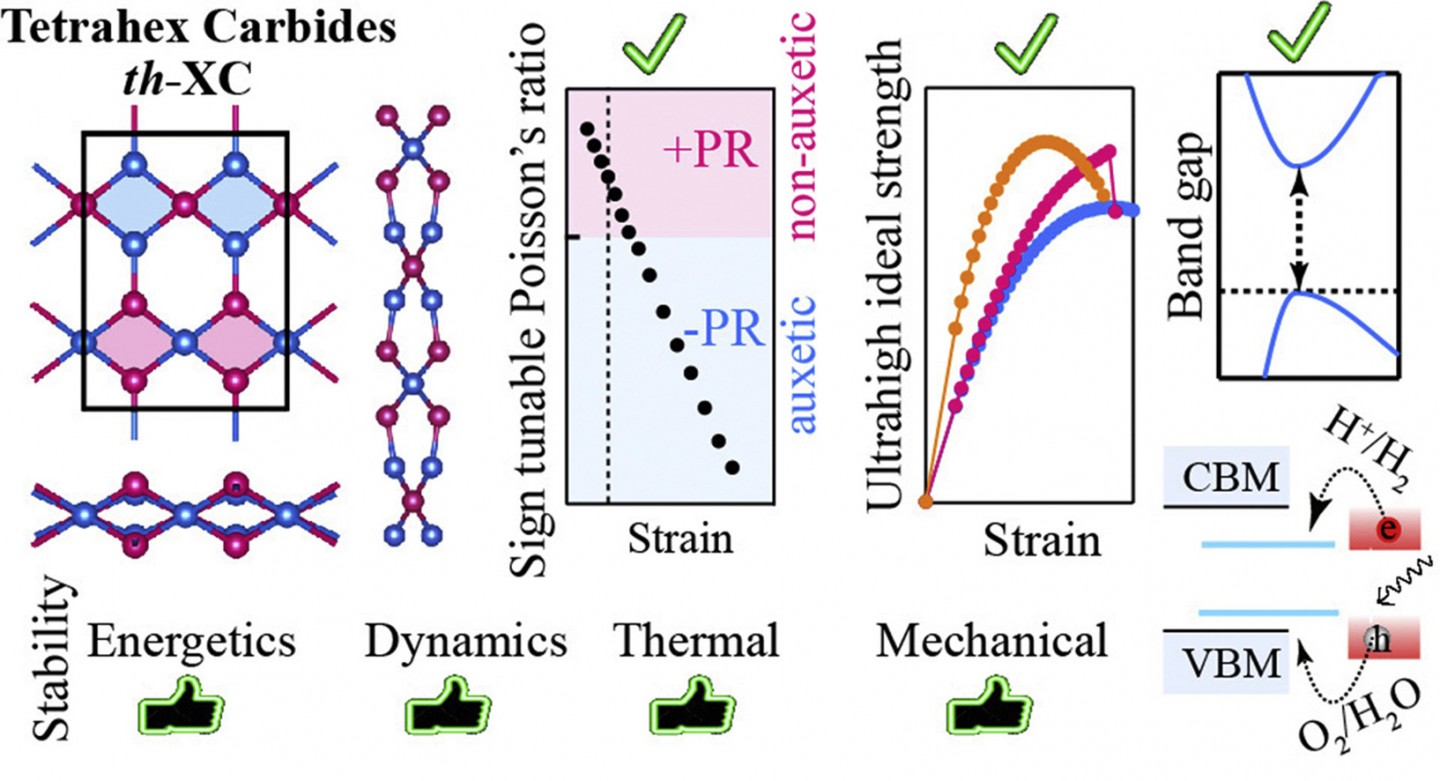Tetrahex carbides: Two-dimensional group-IV materials for nanoelectronics and photocatalytic water splitting
-
Authors :
Mehmet Emin Kilic, Kwang-Ryeol Lee
-
Journal :
Carbon
-
Vol :
174
-
Page :
368-381
-
Year :
2021

Abstract
We report a series of novel two-dimensional (2D) group-IV carbides with perfectly ordered arrangement of tetragons and hexagons. The 2D tetrahex carbides possess robust energetic, dynamical, thermal, and mechanical stabilities. They have strong anisotropic mechanical, electronic, and optical properties. The negative Poisson’s ratio (PR) in the 2D tetrahex carbides emerges by small tensile strain (2–5%). The feature of sign-tunable PR enables them to be non-auxetic, auxetic, and partially-auxetic nanomaterials. They exhibit ultrahigh ideal strength that can even outperform graphene. They are natural semiconductors with direct and indirect band gaps which can be tuned by strain engineering. Beyond the binary carbides, the ternary alloying of group-IV elements further provides the ability to engineer their structural, mechanical, optical, and electronic properties. Excitingly, the alloying offers a continuous band gap energy, band edge modulation, and indirect-to-direct band gap transition. The 2D tetrahex-carbides exhibit high and directionally anisotropic carrier mobility, favorable for the separation of photo-generated carriers, and has very good optical absorption performance in the visible-light region. The position of band edges in the 2D tetrahex carbides fits perfectly the water oxidation and reduction potentials. Therefore, the 2D tetrahex carbides have potential applications not only in photocatalytic water-splitting but also in designing 2D opto-electro-mechanical devices.
















